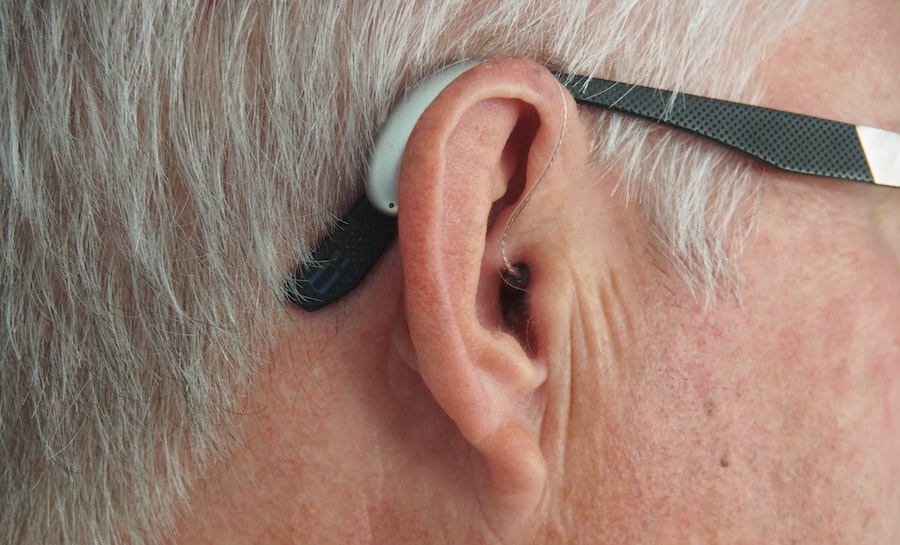On-ear headphones have become increasingly popular in recent years, with many people using them for listening to music, watching movies, and making phone calls. However, it’s important to understand that prolonged use of on-ear headphones can pose potential risks to your ears. In this article, we will explore the anatomy of the ear and how on-ear headphones can affect it. We will also discuss volume control, noise-cancelling technology, fit and comfort, taking breaks, cleaning and maintenance, alternatives to on-ear headphones, and hearing loss prevention.
Ear Anatomy: How On-Ear Headphones Affect Your Ears
To understand how on-ear headphones can affect your ears, it’s important to have a basic understanding of the anatomy of the ear. The ear is divided into three main parts: the outer ear, the middle ear, and the inner ear. The outer ear consists of the pinna (the visible part of the ear) and the ear canal. The middle ear contains the eardrum and three small bones called ossicles. The inner ear contains the cochlea, which is responsible for converting sound vibrations into electrical signals that can be interpreted by the brain.
When you wear on-ear headphones, they sit directly on top of your ears and press against the ear canal. This can cause discomfort and even pain if worn for extended periods of time. Additionally, the pressure from the headphones can affect the movement of the eardrum, which can impact how sound is transmitted to the inner ear. This can potentially lead to hearing problems or damage if not addressed.
Volume Control: Setting Safe Levels for Listening
One of the biggest risks associated with on-ear headphones is exposure to loud noises. Prolonged exposure to loud sounds can damage the delicate structures in your ears and lead to hearing loss. It’s important to set safe volume levels when using on-ear headphones to protect your ears.
The World Health Organization recommends a maximum volume level of 85 decibels for no more than 8 hours per day. To put this into perspective, a typical conversation is around 60 decibels, while a rock concert can reach up to 120 decibels. Many devices have built-in volume limiters that can help you stay within safe levels. It’s also a good idea to take regular breaks from listening and give your ears a rest.
Noise-Cancelling Technology: Pros and Cons
Noise-cancelling technology has become increasingly popular in on-ear headphones. This technology uses microphones to pick up external sounds and then generates sound waves that cancel out those noises. While noise-cancelling headphones can provide a more immersive listening experience, there are potential drawbacks to consider.
One potential drawback is that noise-cancelling headphones can increase the risk of overexposure to loud sounds. Because the external noises are cancelled out, you may be tempted to turn up the volume to compensate. This can lead to potential damage to your ears if not careful. Additionally, some people may experience discomfort or pressure in their ears when using noise-cancelling headphones for extended periods of time.
Fit and Comfort: Choosing the Right On-Ear Headphones
Choosing on-ear headphones that fit comfortably and securely is essential for reducing the risk of ear damage. Ill-fitting headphones can put pressure on the ear canal and cause discomfort or pain. When selecting on-ear headphones, look for adjustable headbands and cushioned ear cups that provide a snug but comfortable fit.
It’s also important to consider the weight of the headphones. Heavy headphones can put additional strain on your ears and neck, especially if worn for long periods of time. Look for lightweight options that won’t cause unnecessary discomfort.
Taking Breaks: Importance of Resting Your Ears

Taking breaks from using on-ear headphones is crucial for protecting your ears. Prolonged exposure to loud sounds can lead to fatigue and potential damage to the delicate structures in your ears. It’s recommended to take a 10-15 minute break every hour when using on-ear headphones.
During your breaks, give your ears a chance to rest and recover. Step away from the headphones and engage in activities that don’t involve loud sounds, such as reading a book or going for a walk. This will help reduce the risk of overexposure and give your ears a much-needed break.
Cleaning and Maintenance: Keeping Your Headphones Hygienic
Keeping your on-ear headphones clean is important for reducing the risk of infection and maintaining their performance. Over time, dirt, sweat, and oils can accumulate on the ear cups and headband, which can harbor bacteria and potentially cause ear infections.
To clean your headphones, use a soft cloth or cotton swab dampened with a mild cleaning solution. Avoid using harsh chemicals or abrasive materials that can damage the headphones. It’s also a good idea to regularly replace the ear cushions to ensure a hygienic listening experience.
Alternatives to On-Ear Headphones: Other Listening Options
While on-ear headphones are popular, there are other types of headphones and listening devices available that may be more suitable for certain individuals. In-ear headphones, also known as earbuds, sit inside the ear canal and can provide a more secure fit. Over-ear headphones, on the other hand, completely cover the ears and can provide better noise isolation.
It’s important to consider your personal preferences and needs when choosing a listening device. If you’re concerned about the potential risks associated with on-ear headphones, exploring alternative options may be worth considering.
Hearing Loss Prevention: Long-Term Effects of Ear Damage
Prolonged exposure to loud sounds, whether from on-ear headphones or other sources, can have long-term effects on your hearing. Noise-induced hearing loss is a gradual and irreversible condition that can result from overexposure to loud noises. It can lead to difficulty hearing high-frequency sounds, trouble understanding speech, and a decreased quality of life.
To prevent hearing loss and protect your ears for a lifetime of listening enjoyment, it’s important to take steps to reduce your exposure to loud sounds. This includes setting safe volume levels, taking breaks, and using protective measures such as earplugs or noise-cancelling headphones when in noisy environments.
Protecting Your Ears for a Lifetime of Listening Enjoyment
In conclusion, while on-ear headphones are popular and convenient, it’s important to be aware of the potential risks associated with prolonged use. Understanding the anatomy of the ear and how on-ear headphones can affect it is crucial for protecting your hearing. Setting safe volume levels, taking breaks, choosing the right fit and comfort, cleaning and maintaining your headphones, exploring alternative options, and practicing hearing loss prevention measures are all important steps in protecting your ears for a lifetime of listening enjoyment. By being mindful of these factors, you can continue to enjoy your favorite music and podcasts while keeping your ears healthy.
If you’re concerned about the potential ear damage caused by on-ear headphones, you might also be interested in reading this article on the science of self-discipline. It explores the psychological and neurological factors behind self-control and offers practical tips for improving discipline in various aspects of life. Understanding self-discipline can not only help you protect your ears but also enhance your overall well-being.
FAQs
What are on-ear headphones?
On-ear headphones are a type of headphones that rest on the outer ear and do not completely cover the ear.
How can on-ear headphones cause ear damage?
On-ear headphones can cause ear damage by producing sound at high volumes that can damage the delicate structures of the ear, including the eardrum and the hair cells in the inner ear.
What are the symptoms of ear damage from on-ear headphones?
Symptoms of ear damage from on-ear headphones can include ringing in the ears, muffled hearing, and difficulty understanding speech.
How can I prevent ear damage from on-ear headphones?
To prevent ear damage from on-ear headphones, you should limit the volume to no more than 60% of the maximum volume, take regular breaks, and use noise-cancelling headphones to reduce the need for high volumes.
Are there any other ways to prevent ear damage from on-ear headphones?
Other ways to prevent ear damage from on-ear headphones include using headphones with a lower impedance, using headphones with a wider frequency range, and using headphones with a lower sound pressure level.









Add Comment